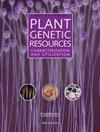油菜基因库种质资源的分子鉴定证实了分类上的一致性,揭示了分类错误的低水平和来源
IF 0.7
4区 生物学
Q3 PLANT SCIENCES
Plant Genetic Resources: Characterization and Utilization
Pub Date : 2023-02-28
DOI:10.1017/s1479262123000035
引用次数: 0
摘要
保存在基因库中的作物种质是作物改良活动中遗传多样性的基本资源,是未来粮食安全和可持续农业实践的基础。然而,基因库种质资源的分类错误(由于分类错误、污染和数据整理不良)限制了这些材料的有效利用。早期利用基因库种质资源调查物种遗传多样性的研究表明,在芸苔属物种中存在不同程度的分类错误。针对这一报告的全球收集的分类错误,以及针对U三角形中6个芸芥物种的特定染色体(a, B和C)的多重PCR (MPCR)标记的可用性,本研究进行了确认澳大利亚谷物基因库(AGG)长期收集的芸芥品种的分类一致性。利用MPCR对5161份材料进行分类鉴定,其中4842份(93.8%)与所标记的分类一致(正确),319份(6.2%)与所标记的分类不一致(错误)。通过MPCR对错误资料的早期再生和原始种子进行评价,80.9%的分类错误可追溯到原始种子,19.1%的错误是由于基因库种子再生处理的结果。本研究结果直接增强了AGG芸苔的收集信息,并为AGG和潜在的其他全球基因库中的分布、获取和再生实践指明了方向,这将有助于研究人员和育种者更有效地利用这些宝贵的遗传资源。本文章由计算机程序翻译,如有差异,请以英文原文为准。
Molecular characterization of Brassica genebank germplasm confirms taxonomic identity and reveals low levels and source of taxonomic errors
Crop germplasm conserved in genebanks, are a fundamental resource of genetic diversity for crop improvement activities, underpinning future food security and sustainable agricultural practices. However, taxonomic errors in genebank germplasm (due to misclassification, contamination and poor data collation) restrict the effective use of this material for correct purpose. Earlier studies investigating species genetic diversity using genebank germplasm, have shown varying levels of taxonomic error within the Brassica species. In response to this reported taxonomic error of global collections, together with the availability of a multiplex PCR (MPCR) marker, targeting the specific chromosomes (A, B and C) of the six Brassica species in U's triangle, this study was undertaken to confirm the taxonomic identity of accessions within the Australian Grains Genebank's (AGG) long-term Brassica collection. A total of 5161 accessions were analysed with MPCR for taxonomic identification, of which, 4842 (93.8%) were confirmed to be consistent (correct) with their labelled taxonomy, while the remaining 319 (6.2%) were identified as taxonomically inconsistent (in-error). Through the evaluation of earlier regeneration and original seed of the error accessions with MPCR, we determined that 80.9% of the taxonomic errors were traced back to the original seed, while 19.1% of errors were the result of genebank seed regeneration handling practices. Results from this study directly enhance information of the AGG Brassica collection and shape directions for distribution, acquisition and regeneration practices within the AGG and potentially other global genebanks, which will facilitate in a more effective use of these valuable genetic resources by researchers and breeders.
求助全文
通过发布文献求助,成功后即可免费获取论文全文。
去求助
来源期刊

Plant Genetic Resources: Characterization and Utilization
Agricultural and Biological Sciences-Agronomy and Crop Science
CiteScore
2.80
自引率
0.00%
发文量
29
审稿时长
>12 weeks
期刊介绍:
Plant Genetic Resources is an international journal which provides a forum for describing the application of novel genomic technologies, as well as their integration with established techniques, towards the understanding of the genetic variation captured in both in situ and ex situ collections of crop and non-crop plants; and for the airing of wider issues relevant to plant germplasm conservation and utilisation. We particularly welcome multi-disciplinary approaches that incorporate both a technical and a socio-economic focus. Technical aspects can cover developments in technologies of potential or demonstrated relevance to the analysis of variation and diversity at the phenotypic and genotypic levels.
 求助内容:
求助内容: 应助结果提醒方式:
应助结果提醒方式:


